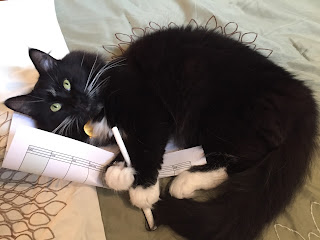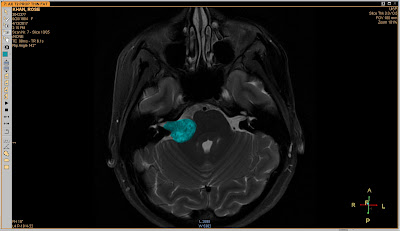NaNoWriMo: Writing a Novel
People often ask me how I wrote a novel. Like all art forms, it has a process. I developed my method of writing over years of practice. I'm sure it's not the same for everyone, but it's a process developed through trial and error.

1.Outlining
2. Planning a Scene
3. Capturing the Scene
 |
| Marked up outline for Return to the Castle |
1.Outlining
To prevent meandering plot holes, I begin with an outline. My outline is mapped out as an excel document. I track different elements, like tension resolution and character POV. I also look for balance between Aurumice and Earth.
2. Planning a Scene
Undeniably, my favorite part of writing never happens at a computer. I would define myself a kinesthetic writer. I write best when moving. I run and walk, listening to music, often to the same track over and over again. The music and movement activate my brain in such a way that it is easier to imagine and see the scene. It's a surreal and delightful way to write, sort of like reading a book with no book in front of you. (If other writers use this method, I would like to hear from you. I've never read about it in any books on writing.)
3. Capturing the Scene
After I feel the scene is set in my mind, I begin to type. Usually dialog is my first priority, then bits of setting. Every scene has a certain rhythm to it and they're all driven by conflict. Even the most inane conversation between friends is riddled with arguments and bickering.
4. Tracking Progress
After the scene is captured, I revisit my spreadsheet and color the corresponding chapter. My mood dictates which chapter I write. The spreadsheet satisfies my obsessive compulsive side, the side of me that needs an A+ for accomplishment. When I feel the story has gone no where, I can look back and see that I have written, and every chapter is a step towards progress. I know damn well the battle has barely begun, but I need to tell myself that I've done something, otherwise I would lock up from guilt.
5. Editing
I used to edit as I wrote, but then I got bogged down in revisions. Now I let the story be, trusting my outline, plunging forward. Once everything is written, I go back and edit. The result is a delightful story that I have never read before. It's exciting and sometimes I barely remember that I wrote. This rediscovery makes editing really joyous. I go through, filling in setting, and tweaking dialog.
6. Check Lists
The further I edit, the more I become mechanical in my process. Every scene must have visuals, a taste, a sound, a smell, and the inner feelings of a character. I check every single chapter for these elements. I go through and make certain every scene is told from one consistent perspective, if you notice, you will never see Jessi's and Nico's thoughts in the same scene. The reader follows one character and experiences the world from their eyes only, (unless, of course, that character is Jared and that opens a whole different discussion...).
7. Reading Aloud
Some people are baffled by the fact I read my entire novel aloud. It's possible one of the easiest and most critical ways to catch mistakes and uncover awkward dialog. Yes, it's a time consuming process, but a necessary one.
8. The Printed Read-Through
A silly but important step is to actually print the book and edit the physical version. At this stage, I invite my first proofreaders to the table, first and foremost my husband. I don't ask my husband to read because he is a kind source of encouragement, quite the opposite. He is my worst critic. He is like me, was raised on a steady diet of literary sci-fi and fantasy, and was also a Creative Writing minor in college. He has a very discerning eye for detail, loves to debate inconsistencies, and will argue plot points. I need this counterpoint because it forces me to either write in details to justify my character's actions, or change the course of the story, (usually the former). Most of the time, I follow his guidance. Sometimes, very rarely, I refuse to change a detail because it so wholly feels right. But even when I refuse to change, I've gained a solid list of reasons as to why I made my decision.
9. The Friendly Proofreaders
I'm cautious who I invite to this table. They are people from a range of ages, background and genders. Some focus on the technical side of the writing, some go right at the plot. Usually they're kinder than my husband, but they have the ability to see things we haven't seen.
10. The Final Editing
A silly but important step is to actually print the book and edit the physical version. At this stage, I invite my first proofreaders to the table, first and foremost my husband. I don't ask my husband to read because he is a kind source of encouragement, quite the opposite. He is my worst critic. He is like me, was raised on a steady diet of literary sci-fi and fantasy, and was also a Creative Writing minor in college. He has a very discerning eye for detail, loves to debate inconsistencies, and will argue plot points. I need this counterpoint because it forces me to either write in details to justify my character's actions, or change the course of the story, (usually the former). Most of the time, I follow his guidance. Sometimes, very rarely, I refuse to change a detail because it so wholly feels right. But even when I refuse to change, I've gained a solid list of reasons as to why I made my decision.
9. The Friendly Proofreaders
I'm cautious who I invite to this table. They are people from a range of ages, background and genders. Some focus on the technical side of the writing, some go right at the plot. Usually they're kinder than my husband, but they have the ability to see things we haven't seen.
10. The Final Editing
At this stage, the book goes my paid professional editor. She is amazing and catches a plethora of mistakes. The book wouldn't be a book without her.
Closing Thoughts
As I mentioned, it took me years to this point in my writing. I spent years learning how to write (hands down, my absolute favorite book on writing was How to Write Science Fiction & Fantasy by Orson Scott Card...this book is a must read for sci-fi/fantasy writers). This outlined method works well for me because it is methodical and structured, reining in my scattered way of thinking. I know my path and I follow through. Most importantly, having a method propels me mentally past the most difficult part of writing: actually writing.
Closing Thoughts
As I mentioned, it took me years to this point in my writing. I spent years learning how to write (hands down, my absolute favorite book on writing was How to Write Science Fiction & Fantasy by Orson Scott Card...this book is a must read for sci-fi/fantasy writers). This outlined method works well for me because it is methodical and structured, reining in my scattered way of thinking. I know my path and I follow through. Most importantly, having a method propels me mentally past the most difficult part of writing: actually writing.




Comments
Post a Comment